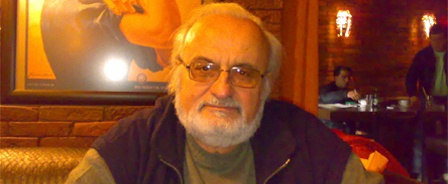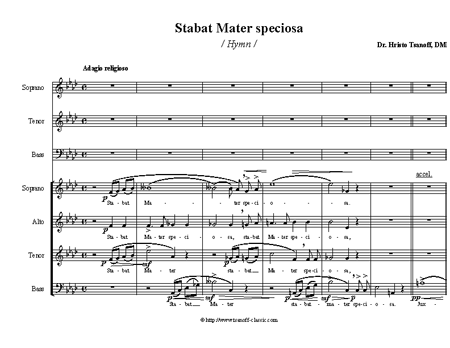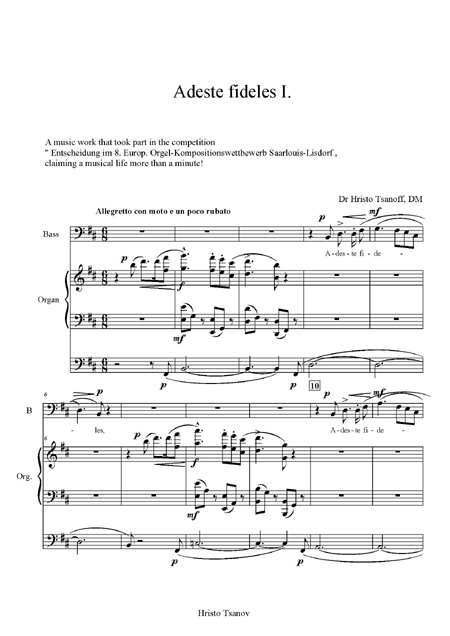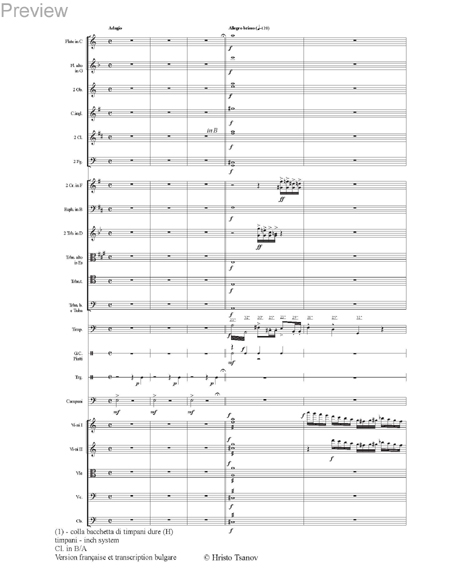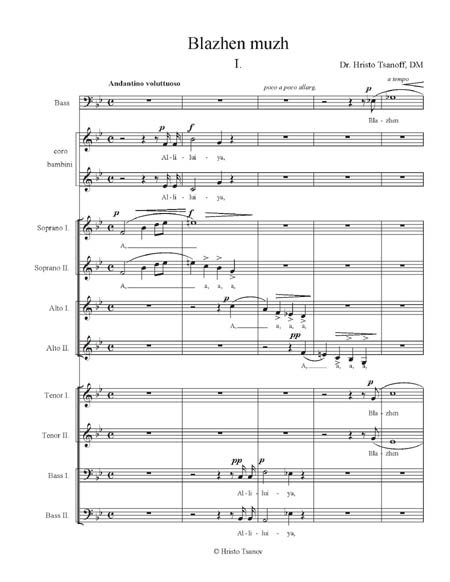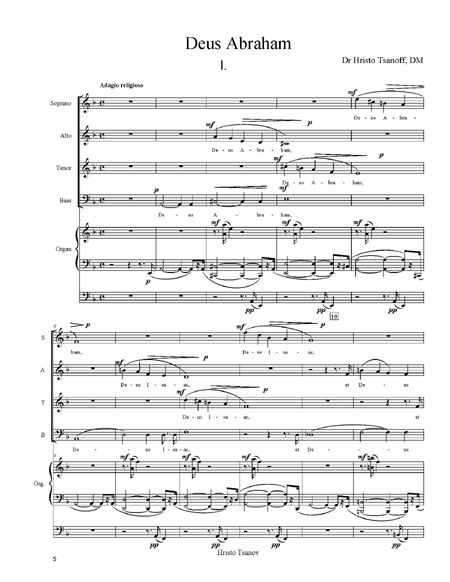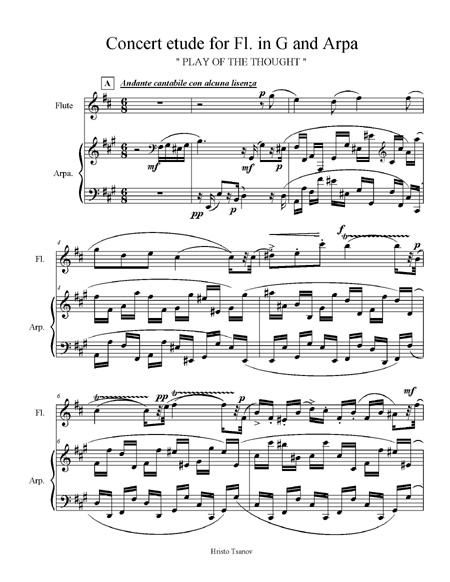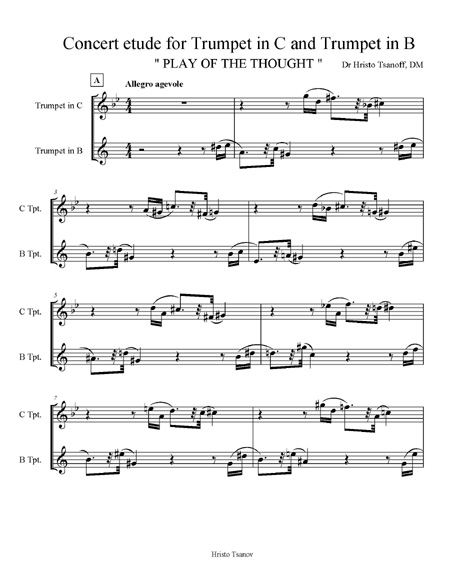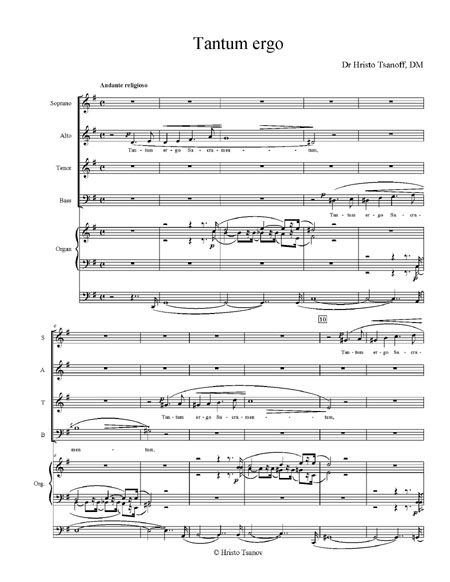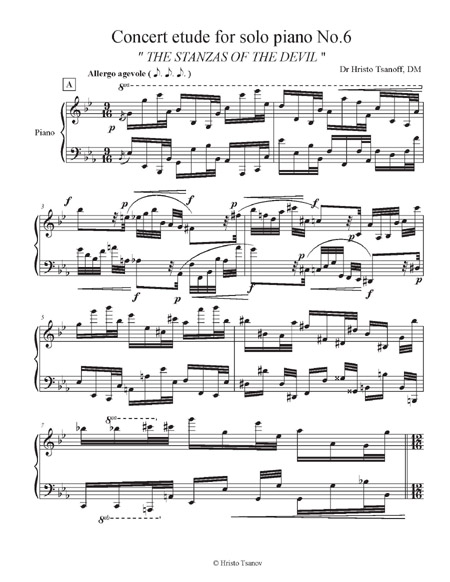Stabat Mater speciosa [ Hymn ]
coro a cappella: SATB
soloists: Soprano, Tenor, Basso
/ measure: 354 /
27 February 2006, Monday - 13 March 2006, Monday
/ villa "Lina", v.Emona, Bulgaria /
back to works
Please see a small part of this work in printed form [PDF version]. While performing in a Christian church, not due to a copyright fees. The same goes for concert performance for charity! For more information please contact us.
In a possible interest in the work, please contact us through our e-mail.

Hristo Spasov Tsanoff: Stabat Mater speciosa (2006)
for STB soloists and SATB unaccompanied chorus
comments by Peter Fawcett based on a reading of the manuscript score.
There are hundreds of settings of the mediaeval hymn Stabat Mater dolorosa but surprisingly few of the slightly later companion hymn Stabat Mater speciosa , The former addresses Mary in the context of Christ's crucifixion, the latter in the context of the Nativity.
It is pleasing that Dr Tsanoff has sought to rectify this imbalance with a new setting of speciosa.
THE TEXT The text consists of twenty-three 3-line stanzas.
The first ten (numbered 1 through Sb) celebrate Mary and the Nativity, and the prevailing mood is of ecstasy:
1-4: the joy of Mary
5 - 6: rhetorical and ecstatic questions
7 - 8: pity of the lowly stable
8a-8b: joy of the angels and of Joseph The next eleven (numbered 9 through 18} form a prayer to the Virgin:
9 -10: supplication for the gift of ardour and love
11-12: supplication for the gift of sympathy and penance
13/a/14: supplication for the gift of joy and ardour
15-18: invocation of Christ through Mary The last two stanzas (19 & 20) form an affirmation of the Christian faith.
One looks for recognition and heightening of this structure of the text in a choral setting. (This may be my unjustifiable western-European bias for I have noticed a less obvious relationship between text and music in, for example, Bulgarian folk song, which seems to gain in power thereby; but I read Tsanoff's work as being in the mainstream of symphonic music).
There are fermata at significant points but in general I don't see the musical devices being employed so as to bring out the structure of the text. The overall mood in the first part (1 - Sb) is not that different from the second part (9 -18} or the coda. Thematic material appearing in the first part is used again in the second, but in contexts where the text suggests a very different mood. This may be intentional, of course.
For example, the motif introduced at bar #30 for "0 quam laeta (O how jubilant)..." reappears at #118 for "et algori subditum (subjected to the cold)". Another instance, the "laughing" motif of #49 for "Quae gaudebat (0 how she was happy)" reappears at #130 for "Vidit ....vagientum (She saw ... crying)" and again at #204 for "Tui nati... poenas mecum divide (share my penance with your child)". The joyous theme of #153 "Nati Christus in praesepe (for Christ born ...}" is next used at #250 "Virgo ... non sis amara (Virgin, be not bitter)".
MUSICAL IDIOMThe idiom is expressive, with advantageous use of rhythm, melisma, counterpoint, fugato, etc. The choral textures are varied by thinning and doubling of the parts, by the use of vocalese, and by combinations with the soloists to heighten the musical intensity. These variations in choral/vocal texture are used to good effect at changes of mood.
The underlay of words, and phrasing, is generally practical with just a few awkward spots, such as at the end of bar #3.
The harmonic language is chromatic, verging on atonal in places, and this makes the work more suitable for skilled singers only.
The added "Amen" has a grandeur which brings the work to a fine conclusion.
The work begins and ends in an F-minor tonality. This tonal centre gives way to a generally chromatic/atonal treatment through most of Part One but centring on G-major through the transition and into the first four stanzas of Part Two. Shift to a D-minor centre for the next two stanzas and then recall of the G-major themes, now F-major, before reprise of the opening F-minor material for the coda (stanzas 19-20).
Again it is possibly my bias, but I find this sequence of tonality surprising in relation to the structure of the text. To me, the harmonic structure is working against the textual structure; the expression of ecstatic joy on the one hand, and of earnest supplication on the other.
IN CONCLUSIONThese comments have been made by way of constructive criticism. It has been a privilege to appraise the work.
A fully-professional choir might enjoy the challenges of the setting, and I wish Dr Tsanoff success in seeking a performance.
Peter Fawcett,
Hobart, Tasmania
Australia January 2007

